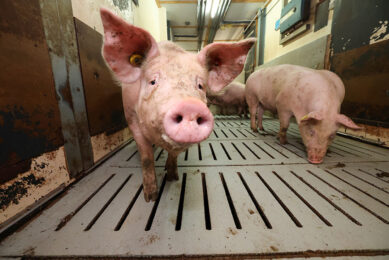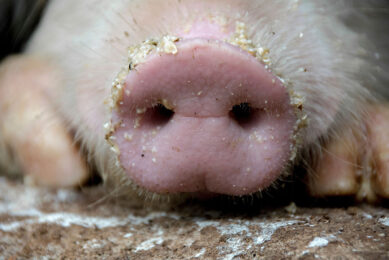Unidentified pig manure foam startles US pig industry
Swine farms in midwestern USA have stumbled on a phenomenon that so far has been difficult to explain – foam rises from hog manure. The foam caused the explosion of six pig farms since 2009.
Website Wired.com reported that the six farms were blown up after methane trapped in an unidentified, pit-topping foam caught a spark. In the afflicted region, the foam is found in roughly one in four swine farms.
Charles Clanton, University of Minnesota, said, “This has all started in the last four or five years here. We don’t have any idea where it came from or how it got started. Whatever has happened is new.”
Occurrence
It is common in southern Minnesota and northern Iowa, and in adjacent parts of northwestern Illinois and southwestern Wisconsin, but the foam doesn’t seem to be spreading outside that area.
A gelatinous goop that resembles melted brown Nerf, the foam captures gases emitted by bacteria living in manure, which on industrial farms gathers in pits beneath barns that may contain thousands of animals.
Inside the foam’s bubbles, methane reaches levels of 60-70% – four times what’s considered dangerous. The foam can reach depths of more than four feet (1.22 m) and sometimes it would come up through the slats. A spark from a routine repair may make a farm explode. This happened in a farm accident in September 2011 when 1,500 pigs were killed and a worker got injured.
Causes
Among potential causes of the foam are new bacterial communities that cause foam to form, or a change to the molecular structure of hog waste – a new foodstock, for example, or a pit-cleaning soap that makes the waste more frothy.
It could also be caused by a combination of the two – or neither of them. Distillers Dried Grains and Solubles (DDGS) have also been suggested as possible cause.
Scientists have so far been stumped by the foam’s patterns. Once the foam’s established, it keeps coming back, regardless of efforts at cleaning and decontamination.
“I don’t think it’s a dangerous new microbe,” said Angela Kent, a microbial ecologist at the University of Illinois at Urbana-Champaign. “I think it’s a shift in the environment that’s favoring a particular microbial assemblage that’s inadvertently causing this.”
Related websites:
• University of Illinois
• University of Minnesota
Join 18,000+ subscribers
Subscribe to our newsletter to stay updated about all the need-to-know content in the pigsector, three times a week. Beheer
Beheer










 WP Admin
WP Admin  Bewerk bericht
Bewerk bericht